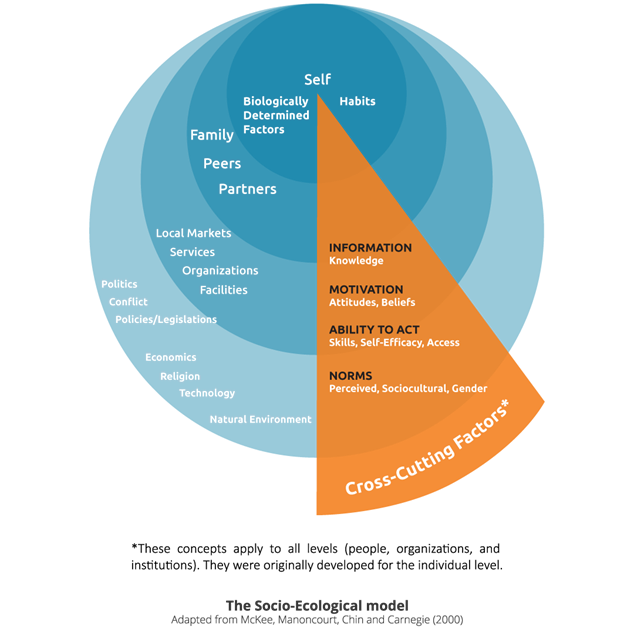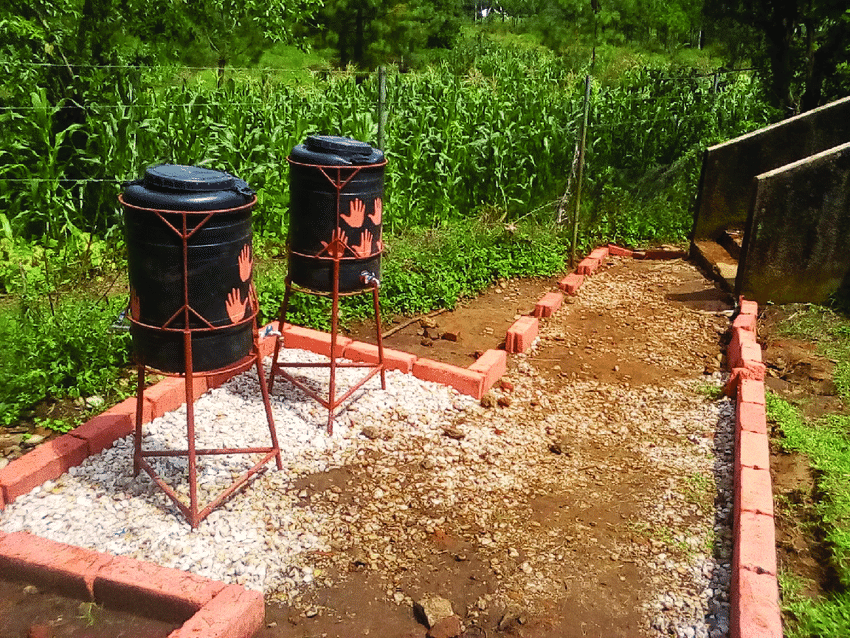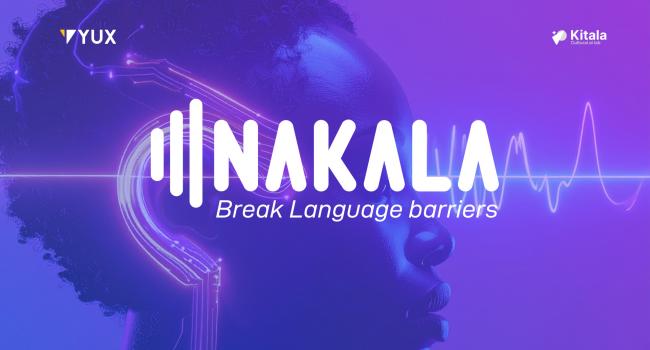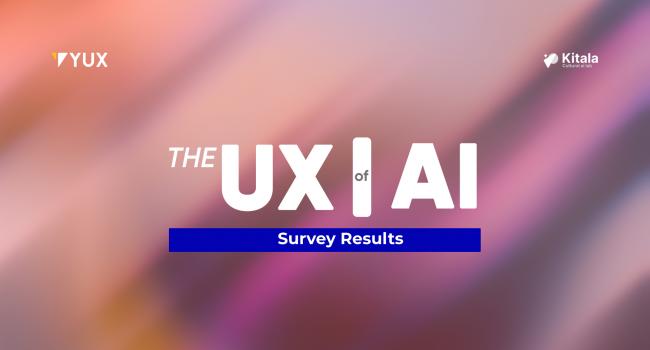Prior to launching the State of HCD in Africa survey, we had consultations with various experts within the HCD field to understand their experiences implementing HCD within the African context and also to inform/validate the questions being explored in the survey. During these consultations, we had the opportunity to discuss with Social and Behaviour Change (SBC) experts within the UNICEF Ghana team. Some members of the YUX team, myself included, also had the great opportunity to visit the UNICEF Ghana office in Accra. During this visit, we engaged in enlightening conversations that delved into the ways in which the UNICEF Ghana office harnesses the power of HCD tools under SBC to drive positive transformations in the lives of people in Ghana. These conversations have been summarized in this blog post.
In the international development world, Social and Behavior Change (SBC) is a critical tool for achieving positive outcomes in various sectors such as health, education, and social well-being. At its core, SBC focuses on influencing human behavior to promote positive social change. Behavior change is fundamental to the success of any development intervention, as it ensures that the intended beneficiaries adopt and maintain new practices, improving their overall well-being.
 - SBC Expert, UNICEF Ghana
- SBC Expert, UNICEF Ghana
The SBC and HCD Approach

Human-Centered Design (HCD) stands out as a significant approach within Social Behavior Change (SBC), offering a seamless means to catalyze significant and sustainable transformation across diverse fields. HCD is a design methodology that prioritizes empathy and user-centric solutions, ensuring that the needs, preferences, and aspirations of the target population are at the forefront of any intervention. On the other hand, SBC is a systematic process of understanding and influencing human behavior, often used to address complex social issues. While SBC frameworks provide structure and direction in tackling challenges, they often lack the inclusion of direct participation from the target audiences for a more comprehensive grasp of issues and intervention design. This is where HCD comes in, by making SBC interventions more accessible and stressing the necessity of involving end-users throughout the entire process, including intervention design.

- Emaptika, Nutrition International and Save The Children International (2021)
The UNICEF Ghana team emphasized that the foundation of the SBC approach lies in data and the necessity of a comprehensive research report. This report functions as the bedrock of evidence which is crucial for establishing SBC strategies and interventions. The team also placed a significant emphasis on the pivotal role of Knowledge, Attitude, and Practices (KAP) studies, which serve as an integral starting point for SBC endeavors. These studies delve deep into the knowledge, attitudes, and behaviors of communities concerning specific areas. KAP studies provide an initial understanding of the extent of people's knowledge, their emotional disposition, and the behaviors they exhibit in connection with a particular issue. This foundational data serves as a cornerstone for crafting precise and tailored SBC interventions.
Once a profound understanding of the underlying behaviors has been achieved, the subsequent step involves brainstorming activities or strategies that hold the potential to drive transformative change while ensuring their feasibility. Following this, it is essential to pre-test these activities in select regions and make necessary adjustments based on regional disparities, specific target populations, or any other relevant factors.
Upon implementing, testing, and refining the strategies, it becomes imperative to establish monitoring and evaluation frameworks that ensure the interventions are not only effective but also align with their intended objectives, addressing the issues they were designed to tackle.
Not Just Limited To Direct Communication:
When SBC interventions are discussed, there tends to be a focus on the Communication for Development (C4D), which was the previous name used to refer to SBC. The C4D approach employs various communications strategies including behavior change communication, social transformation communication and advocacy to instigate behavioral change within communities. While direct communication plays a crucial role in SBC, several other strategies and tools can be employed to achieve these changes such as nudges.

- SBC Expert, UNICEF Ghana
Nudges are subtle, often small, changes or interventions in the way choices or information are presented to people with the aim of influencing their decisions and behaviors in a predictable way. The UNICEF Ghana team highlighted the pivotal role of nudges as invaluable tools, especially during the COVID-19 pandemic, in motivating people to engage in regular handwashing practices. They shared that inorder to encourage people to wash their hands, handwashing facilities were placed everywhere, including in unconventional spots where people would typically not find hand washing facilities.

Source: The “Mikono Safi” Intervention:https://bmjopen.bmj.com/content/9/11/e030947
Here's an illustration of how nudges, like vibrant handprints on hand-washing stations, have been used to encourage school children in Tanzania to wash their hands.
The Intersection Between HCD and SBC
HCD is a powerful tool for crafting SBC strategies that are more effective and tailored to the specific needs and contexts of the target audience. HCD aids in the creation of interventions and communications that resonate with individuals, making behavior change more accessible and sustainable. It ensures that SBC initiatives are not only evidence-based but also genuinely empathetic and user-friendly.
The UNICEF Ghana team illustrated the intersection between HCD and SBC by sharing an initiative which sought to enhance access and communication between parents and adolescents with the end goal of curtailing adolescent pregnancy and improving access to mental health services amongst adolescents in Ghana. This initiative unfolded within two pilot districts in Ghana, with the UNICEF Ghana team working closely alongside the Ghana Health Services. The initial discovery phase brought to light the ineffective communication between adolescents, their parents, and healthcare providers, as well as the inadequacy of parental control in these communities. Following this revelation, intervention pathways were identified, and all stakeholders were invited to partake in co-creation workshops where they brainstormed additional pathways and deliberated on the feasibility of the proposed interventions. Subsequent to these workshops, rapid prototypes were crafted for the intervention pathways, followed by swift testing of these prototypes, a process that refined and fine-tuned them into high-fidelity interventions.
It is worth noting that the UNICEF Ghana team emphasizes the importance of ensuring that the implemented interventions seamlessly integrate into the everyday lives of community members. Consequently, during the testing phase of the interventions, feedback was actively collected from communities to determine how these ideas could be seamlessly incorporated into their daily routines, devoid of any undue inconvenience or disruption.
Challenges with utilizing and implementing HCD Solutions and SBC interventions
The UNICEF Ghana team shared that the three main challenges:
- Prioritizing ideas: At times, a plethora of interventions or ideas are gathered, and it’s challenging to separate and prioritize them due to their interconnected nature, thereby making it necessary to implement them as a cohesive cluster. However, limited funding may pose constraints on the execution of these integrated solutions.
- No “one-size fits all” solution: The diverse communities within African countries make it impractical to have a universal solution, necessitating the customization of strategies for various cultures and communities. However, this tailored approach can pose challenges in terms of resource allocation.
- Inadequate understanding of HCD and SBC approaches amongst partners:
HCD and SBC have become buzzwords amongst partners, yet a comprehensive grasp of these methodologies remains elusive. This knowledge gap is, in part, a result of inadequate capacity building among partners. The lack of a clear understanding of these approaches occasionally prompts partners to request structured, narrow-focused research that diverges from the principles of HCD and SBC.
In conclusion, the role of both SBC and HCD in the development world cannot be underestimated. UNICEF Ghana's dedicated efforts in intersecting both approaches are making a significant impact on improving the lives of Ghanaians. As they continue to refine and expand their initiatives, we can anticipate even greater positive changes in the future. There is a need to foster more of these conversations that democratize information about HCD practices tailored to the African context in order to equip HCD practitioners within the African continent with insights that can inspire innovation, and create positive change.
Interested in understanding the current landscape of HCD within the African continent? Check out our report on the State of HCD in Africa which explores HCD approaches and methodologies, pinpoint challenges and limitations inherent in the application of HCD within the African context while also delving into potential areas for advancement and growth in the field Also, feel free to get in touch with us hello@yux.design for any questions or comments you may have!



